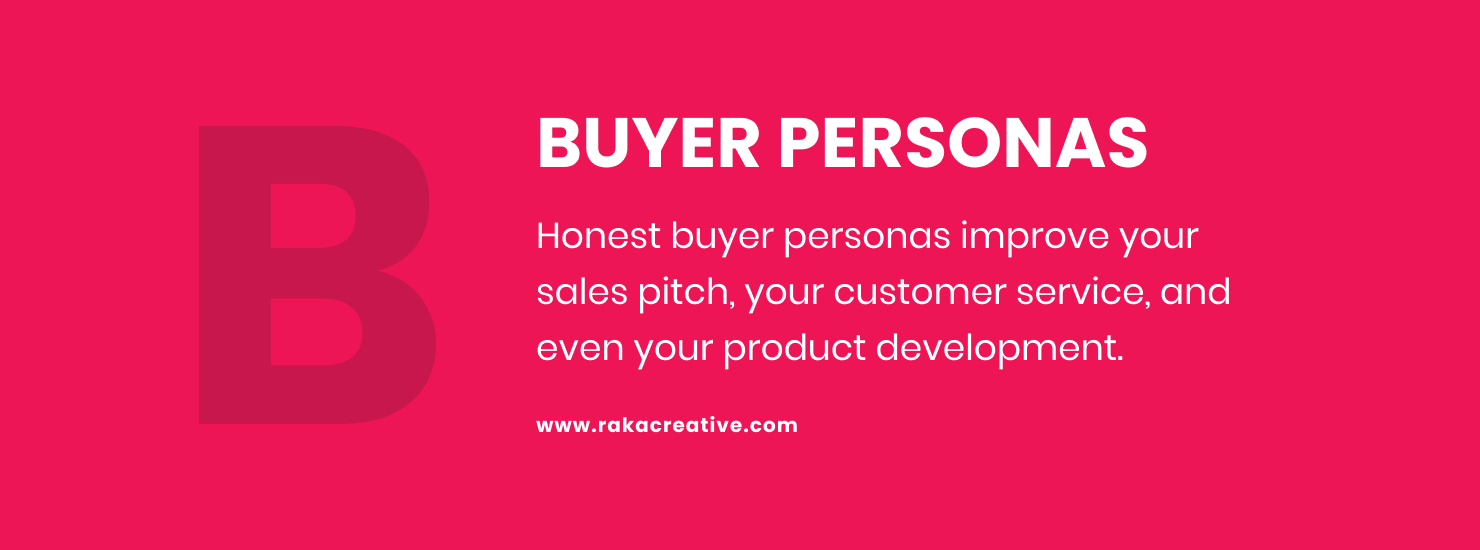When it comes to actually sitting down and creating buyer personas, there are two issues we see a lot. Actually, they’re sort of opposite sides of the same issue:
Issue #1: There isn’t enough information to create a comprehensive buyer persona.
Issue #2: There’s too much information to turn this into a well-defined buyer persona.
Now that last one might not seem like a problem, but lemme tell ya, it can be a real pickle.
So let’s go through some dos and don’ts of creating buyer personas. And if you’re still not sure where to start, let me humbly suggest that you download our free buyer persona template.
DO: Use your resources
The first step to creating a buyer persona is research: That means market research, surveys of current customers, surveys of prospects, professional contacts, sales representatives…basically any and all of the resources you have available to you who might fall within that particular persona.
Look through your contacts database to find trends within a persona, like how they came to be a contact in the first place. Ask your sales representatives about the types of questions and objections they hear from prospects.
When surveying customers or prospects, make sure the questions are specific but not confusing. You want to know their job title, how a typical work day goes, and whether or not they are a decision maker within their company.
You also want to ask about any pain points or challenges they have, because these are the problems your business wants to solve.
What sort of experience are they looking for when purchasing your type of product or service? How do they generally consume information?
You can also use internet sources like the U.S. Bureau of Labor Statistics to learn basic demographics and salary range information for a particular persona.
DON’T: Just fill out the survey yourself
Realistically you need 3-5 surveys or interviews to develop a useful buyer persona. Filling in the buyer personas with guess work—even educated guess work—is a bad idea. Why? Because even if you feel like you know your buyers, it’s better to get information first hand.
DO: Give your persona a name
While this might seem like a relatively minor part of the buyer persona, it’s important to the process. You’re creating a character here; a semi-fictional representation of real life people you want to purchase your product or service. Your real customers have names, so should your buyer personas.

And yes, talking about “Vice President Vincent” or “CEO Sarah” in a strategy meeting might feel silly at first, but we promise, it will make you a better marketer.
DON’T: Give your persona too many jobs
When creating buyer personas, you often need to consolidate a few different hypothetical buyers into one persona.
For example: If your company sells lifejackets, your buyers probably include boating instructors, boat tour companies, and boat rental shops. Since much of your targeted advertising for one of these positions could work for the other two as well, you could consolidate these three roles under a persona named “Recreational Rick.”
However, you probably also sell to sporting equipment shops and camping and outdoor gear stores. These buyers probably aren’t looking for the same information, quantities, and experience as the others, so you don’t want to lump them together.
You want your personas to be specific, but you also don’t want to have 12 different buyer personas, so there’s a balance to be struck. Typically 5 to 6 personas is a good middle ground.
DO: Identify your primary personas
Of course all of your personas are equally important. But where your bottom line is concerned, let’s face it, certain segments of your audience are responsible for more revenue. So while you’ll want to develop content for all of your prospects, some personas deserve a deeper focus and a greater portion of your resources.
To get an idea of where you should be concentrating your efforts, consider the following for each of your buyer personas:
- Percentage of your total audience
- Percentage of total current revenue
- Percentage of total potential revenue
With these percentages in mind, you can begin to structure your publishing schedule with content mapped to generate more high ROI leads.
If you’re just starting out, you likely don’t have exact metrics for these. That’s okay. You have resources.
Talk with your sales team to get a sense of their goals and with your financial team to get their revenue-based assessment, then plan accordingly. Once you’ve had a chance to build up your persona database, and you’ve integrated your CRM, these breakdowns will become more clear.
DON’T: Consider yourself done
Just like the real people behind them, consider your buyer personas alive. They’re living documents that you should feel free to update as you learn more.
You should continue to conduct surveys, sit in on sales calls, review analytics, and read through customer comments, questions, and complaints and update your personas as you see patterns develop. Then, plan a formal review of your buyer personas at least once a year.




